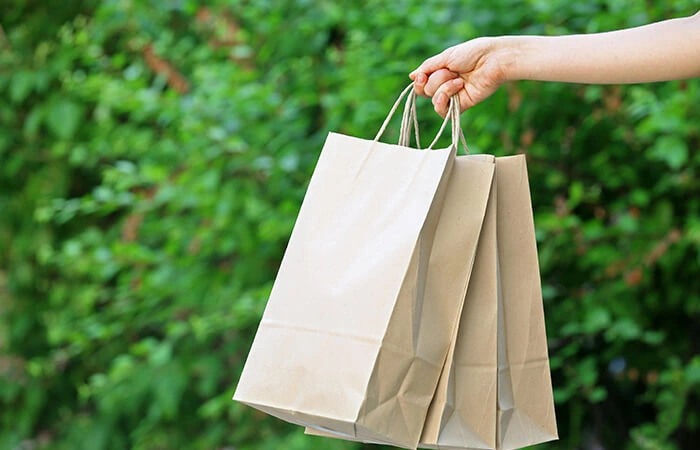Effects of Paper Bags: I like to use paper bags because they are easy to carry and clean and can remain stored for a long time. Paper bags have been a fragment of the trade for centuries. Traditionally, cloth or jute sacks remain used to pack large quantities of goods during transit from manufacturers and farms to retailers.
After which shopkeepers use paper bags to distribute small amounts of goods to final customers. In point, paper bags stand still used by small grocery retailers such as pastry shop owners, street vendors, bakers, and small greengrocers. On the other hand, paper bags’ structural strength and surface properties, superior to plastic bags for printing high-quality images, logos, and designs, have become a hit in the fashion, luxury goods, and gift packaging industries.
Table of Contents
Environmental Effects of Paper Bags

However, industrialization and improvements in plastic packaging options have gradually left little paper bags’ contribution to the economy and trade. It is due to its outstanding durability, strength, and aptitude to protect crops, particularly food products, from the external environment, making them more tough.
Plastics have conquered the global wrapping industry for 50-60 years. During this time, the world has seen the negative impact of non-biodegradable plastic wrapping waste on the global setting. Plastic bottles and food wrapping clogged the oceans.
Species of sea and land animals began to die from the plastic that accumulated in their digestive systems, and the land became less fertile due to the plastic that collected in the soil. Until the 1990s, these issues stood primarily discussed in newspapers, academic studies, and world summits.
Then, in recent years, pollution began to affect the daily lives of city dwellers and ordinary people. People get sick because of polluted air, and the public (especially in big cities in India) appreciates organizations, government agencies, and individuals taking responsible action on the environment.
In such scenarios, the introduction of paper bags contributes to brand reputation. Due to government bans or aggressive measures to gain customer appreciation, companies are gradually adopting biodegradable packaging solutions and using paper bags.
Paper Bags are the New Trend these Days
Everywhere I go, I see people with paper bags. People wear them in schools, offices, and retail stores. Therefore, choosing creative solutions is also very important. Benefit together your business and the environment that matters most. This trend is gaining popularity as people and businesses become more conscious of their ecological environment. Paper bags are also easy to carry and clean and can stand stored for a long time, so many people want to use them.
Paper Bags made from Environmentally Friendly Resources
Contrary to old beliefs that paper means deforestation, today’s paper, and paper bags are mostly not made from trees but sugar cane waste. We use eco-friendly solutions (such as bagasse). Paper remains made from the pulp waste left over after sugar cane production.
Straw: Yes, paper can also remain made from straw fibers. If effectively implemented in rural India, farmers would be able to sell straw at a price rather than burning their crops.
Conclusion
Coconut shells remain usually discarded, but the finer ones are used to make thick textured paper. Elephant Dung: Well, I heard that paper stays now made from elephant dung. Nature-friendly bags are generally made of materials easily degraded by airborne bacteria and other microorganisms. So it takes much less time to resolve to simpler forms. So the time it takes to resolve to a more straightforward form is much faster.

